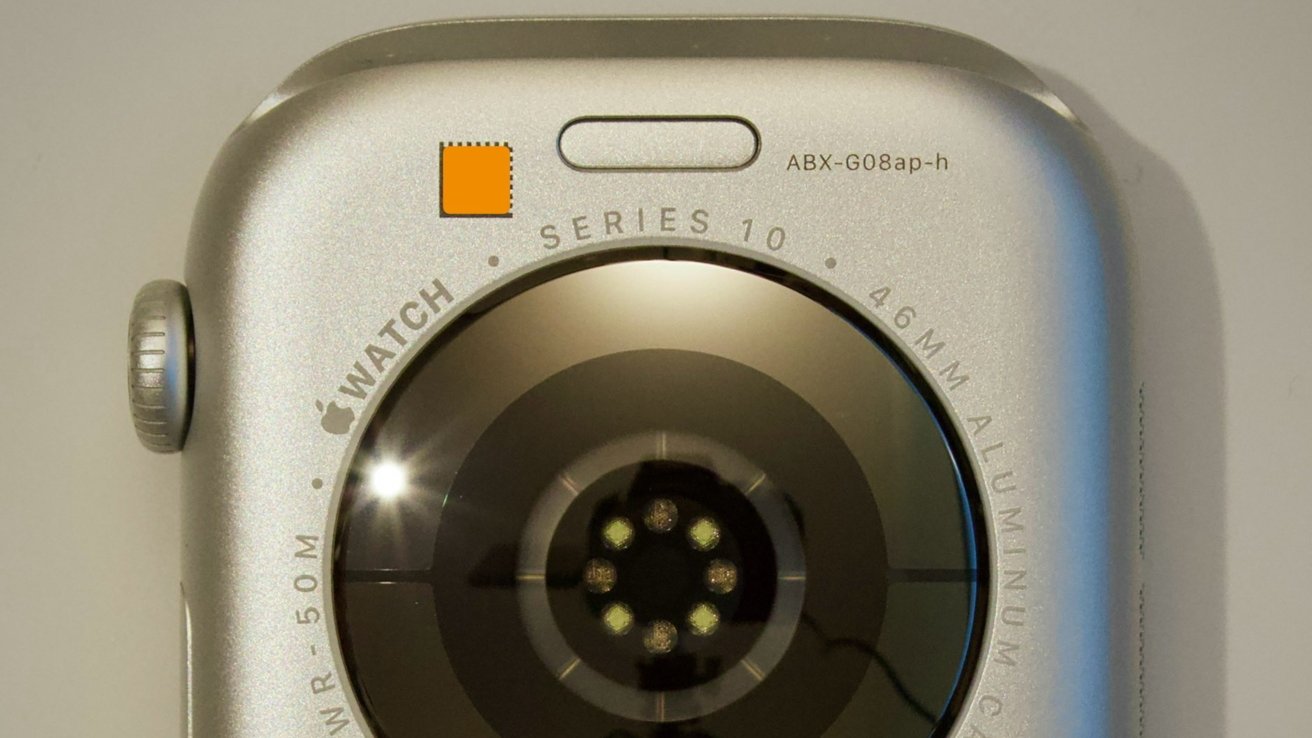Apple Watch Series 10 almost had a new health sensor
An alleged prototype of the Apple Watch Series 10 has a brand new sensor that may have been intended for blood sugar monitoring.

An alleged Apple Watch Series 10 prototype's sensor - Image Credit: X/@StellaFudge
The Apple Watch Series 10 was a relatively light upgrade from the previous model, with a larger display and a thinner body than the Apple Watch Series 9. However, Apple's changes could've gone a lot further.
In images shared to X, "Stella-Fudge" also known as "Choco_bit" offers a quartet of pictures for a device that looks like an Apple Watch. The device is described as a "Prototype Apple Watch Series 10" by the X account, echoed by similar labeling on the casing itself.
The key image depicts the back of the prototype, with a large circular sensor at the back for monitoring a user's pulse. However, the arrangement of the sensor is a big departure from what is on the Apple Watch Series 10's version.
Prototype Apple Watch Series 10 with A very unique health sensor arrangement.
The health sensors got shrunk down a lot and there was an extra light ring around the perimeter. The watch is also running an unreleased build of watchOS 11, somewhere between 11.1b5 and 11.1rc. pic.twitter.com/8n06JkQT39-- Stella - Fudge (@StellaFudge)
Usually more spaced out, the sensors on the prototype are shown to be much smaller, and also take up only a small amount of space in the middle of the sensor glass. The account adds that there's an extra ring light around the perimeter, though it is unclear what it is for.
A screenshot from the device shows it described as the "Apple Watch Series 10 (GPS), running on watchOS 11.1, build number 22R5575x. This is apparently an unreleased build that's somewhere between watchOS 11.1 beta 5 and the release candidate.
Stella-Fudge adds that there is no way to try out the sensors. Stock apps will not install as they can only be pulled from Apple's internal network servers, they add.
As for what the sensor changes could've done, it's speculated by the collector that it could have been a test platform for blood sugar analysis.
Stella-Fudge is a known collector of Apple prototypes, so it is probable that the one pictured is genuine.
Diabetes concerns
Apple has been keen to expand the utility of the Apple Watch into new areas for quite some time. One that has repeatedly surfaced as a potential direction is glucose monitoring, which would help users with, or at risk of, diabetes.
Current methods for blood glucose monitoring typically relies on sampling the blood directly. However, Apple has repeatedly been rumored to be working on ways to perform the test in a non-invasive manner.
However, despite the research efforts, Apple is still thought to be years away from actually introducing such a technology in its hardware. The closest it's gotten is reportedly an app for monitoring and managing blood sugar levels.
If Stella-Fudge is right and the sensor was used to try and monitor blood glucose levels, this could mean Apple was closer to a breakthrough than previously expected.
Read on AppleInsider

Comments